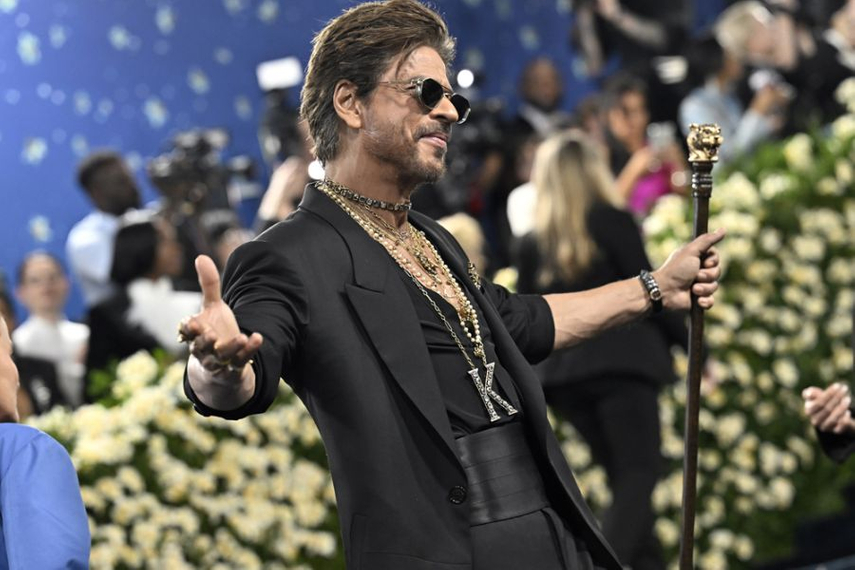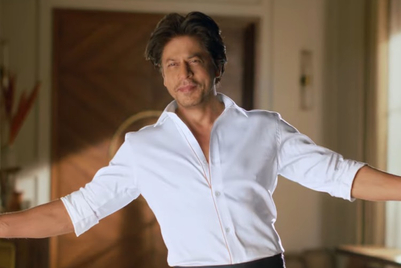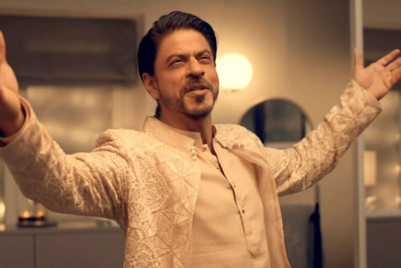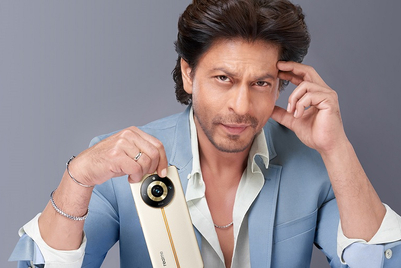
Like millions of Indians, I’m an unabashed Shah Rukh Khan (SRK) fan. So, when a host on the Met Gala’s globally livestreamed red carpet asked our very own King Khan, “And who are you?”, I felt a deep sense of second-hand embarrassment. The moment was as cringe-inducing as it was revealing.
But worse was yet to come. The red-carpet hosts, Teyana Taylor and Ego Nwodim, clearly had no idea who SRK was. The moment only found its footing when designer Sabyasachi Mukherjee, who had styled Khan, stepped in to state matter-of-factly: “Shah Rukh Khan is probably one of the most famous men in the world.” And that’s not PR puffery—it’s fact.
At first, I was indignant. Then, I began to reflect.
SRK’s star power: A global force, not a local icon
In India, we’ve long accepted that many Americans operate on a ‘need-to-know’ basis when it comes to global culture. But wasn’t it the job of SRK’s formidable PR machinery to make sure they did know who he was?
This wasn’t a debutante influencer or a fringe fashion muse. This was the Badshah of Bollywood—a man listed by Time as one of the 100 most influential people in the world, and by Newsweek as one of the 50 most powerful globally. He’s also the fourth richest actor in the world. He wasn’t there by accident—he was making history as the first male Indian movie star to attend the Met Gala.
Styled in an impeccably tailored black outfit by Sabyasachi, SRK embodied the 2025 Met Gala theme, Superfine: Tailoring Black Style, urged people to draw from the famous Black Dandy style in the US. His look was pitch perfect. And he wasn’t the only Indian presence at the event—far from it.
India had its strongest Met Gala showing to date: Kiara Advani made her debut, flaunting a baby bump; Diljit Dosanjh turned heads in a regal white sherwani and turban, styled in homage to the Maharajah of Patiala; designers Sabyasachi and Manish Malhotra walked the carpet; and stalwarts like Priyanka Chopra Jonas (in her fifth Met appearance), Natasha Poonawalla (in a reimagined gara sari gown), and Isha Ambani showcased India's design and jewellery heritage with aplomb.
This wasn’t just an aesthetic moment—it was strategic. The growing prominence of Indian talent and capital on global stages is no accident. Our influence, powered by both soft culture and economic clout, is now undeniable. Indian stars today are not just local endorsers—they are global ambassadors, selling Swiss watches, French skincare and Italian couture across borders.
When visibility is everything, silence hurts
The Met Gala could—and should—have been a celebration of this soft power. But on the global media front, there was barely a whisper. Indian outlets, as expected, covered the moment with pride. The rest of the world, however, scrolled on.
Which begs the question: why didn’t Indian PR firms, global event organisers, and international media houses work harder to spotlight this cultural inflection point? Why did a superstar of SRK’s stature—a man whose mere presence lends credibility to the event—end up being introduced like a newcomer?
Luxury brands are desperate to be seen as inclusive. But inclusion isn’t just about who walks the carpet—it’s about who gets noticed, who gets coverage, and who gets context. For a market as influential and aspirational as India, mere tokenism won’t cut it. Our celebrities drive not only consumption but conversation. It’s time the global ecosystem caught up.
SRK isn’t just a face. He’s a force. He can turn around the fate of a brand, event or film—on charisma alone. And I say this from personal experience.
Brand SRK: From bathtubs to breakthroughs
Two decades ago, I was asked to develop a campaign for Lux to mark its 75 years in India. The brief was to make it memorable.
Initially, we toyed with featuring a constellation of female film stars who had historically endorsed the soap—from Leela Chitnis in 1941 to Kareena Kapoor in the 2000s. But we needed something far more disruptive.
That’s when the wild idea emerged: why not put a man in the Lux bathtub? And not just any man—Shah Rukh Khan.
Selling this concept internally wasn’t easy. The brand manager balked at what he felt was a parody of Lux’s legacy. But Ashok Venkatramani, then vice president for skincare and cleansing at HUL, backed it. With his green light, my account management partner Varun Channa and I nervously pitched it to SRK at Mannat, his seaside palatial abode in Mumbai.
To our surprise, he loved it. He saw the humour, the creativity and the risk—and embraced it. He even contributed ideas that made the film sharper. We shot it on one of Mumbai’s rainiest days, and the results were historic.
For the first time ever, Lux outsold Lifebuoy—Unilever’s leading soap. More importantly, a brand once considered your mother’s favourite suddenly became cool again. Amul even did a topical ad on our ad. That’s the SRK effect.
Put him in a bathtub of rose petals and he’ll sell soap. Put him in a couture black suit on a global stage and he could have sold India to the world.
But that moment never came. And that’s not SRK’s failure—it’s ours. It’s the collective miss of our PR machinery, our marketers, and the global gatekeepers who claim to champion diversity, but too often overlook the very cultures they say they want to include.
SRK will never get a second chance to make a first impression at the Met Gala. But this should be a wake-up call for our industry. Visibility doesn’t happen by accident—it takes strategy, storytelling, and sharp execution.
The next time an Indian star makes a historic debut on a global platform, let’s ensure the world knows exactly who they are—and why their presence matters.




.jpg&h=334&w=500&q=100&v=20250320&c=1)


.jpg&h=334&w=500&q=100&v=20250320&c=1)


.jpg&h=334&w=500&q=100&v=20250320&c=1)
+(900+x+600+px).jpg&h=334&w=500&q=100&v=20250320&c=1)
.jpg&h=334&w=500&q=100&v=20250320&c=1)




+(900+x+600+px)+(3).jpg&h=268&w=401&q=100&v=20250320&c=1)
+(900+x+600+px)+(2).jpg&h=268&w=401&q=100&v=20250320&c=1)


